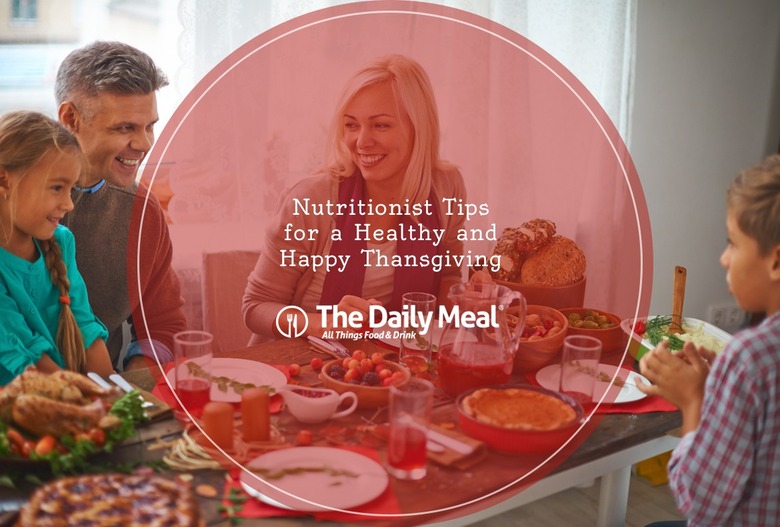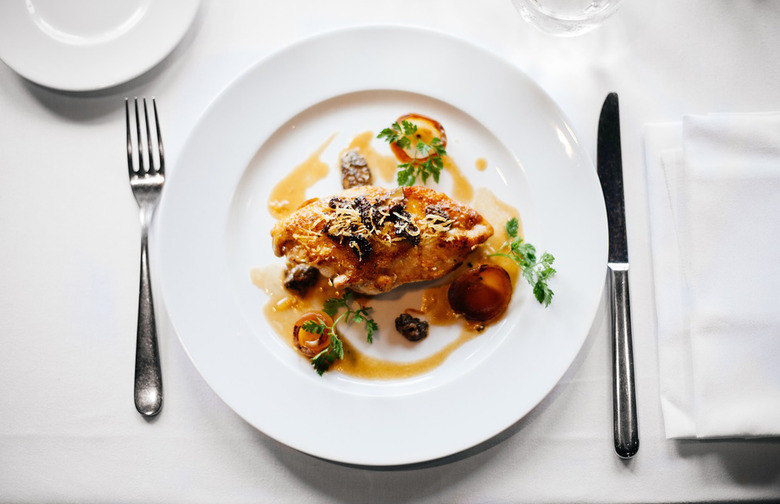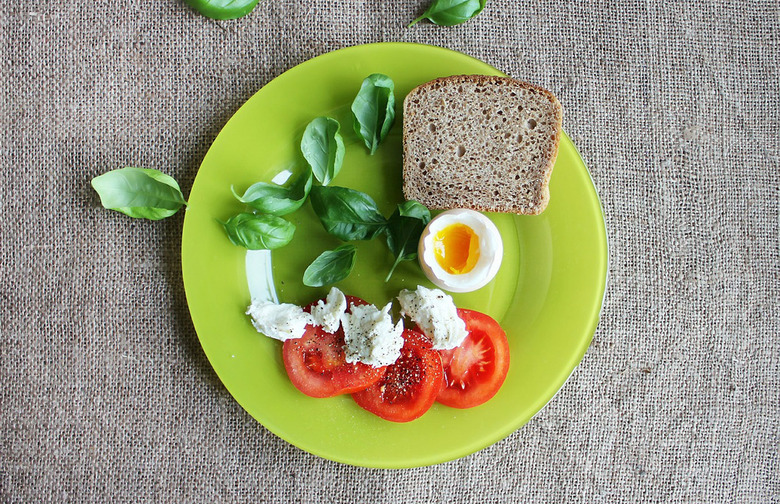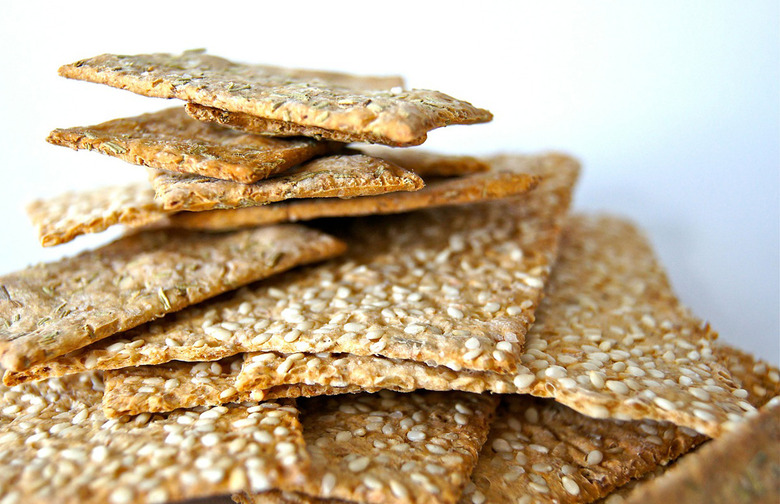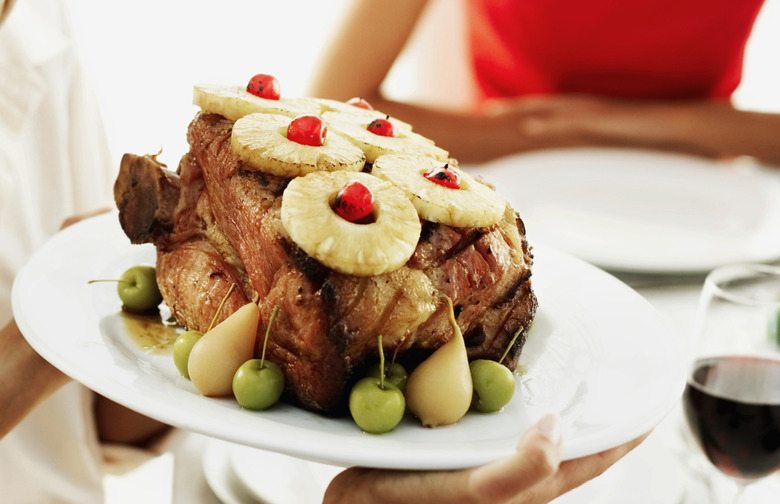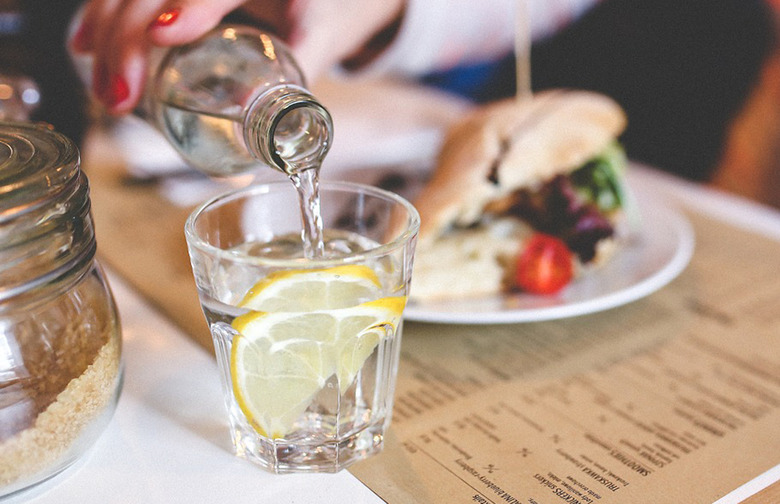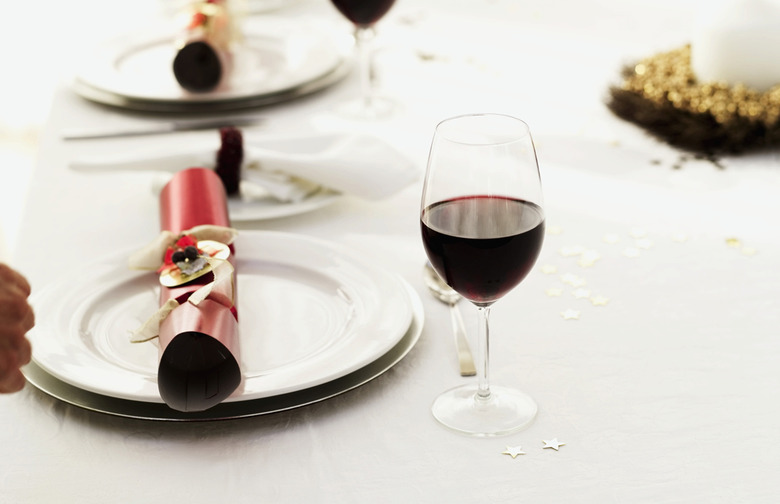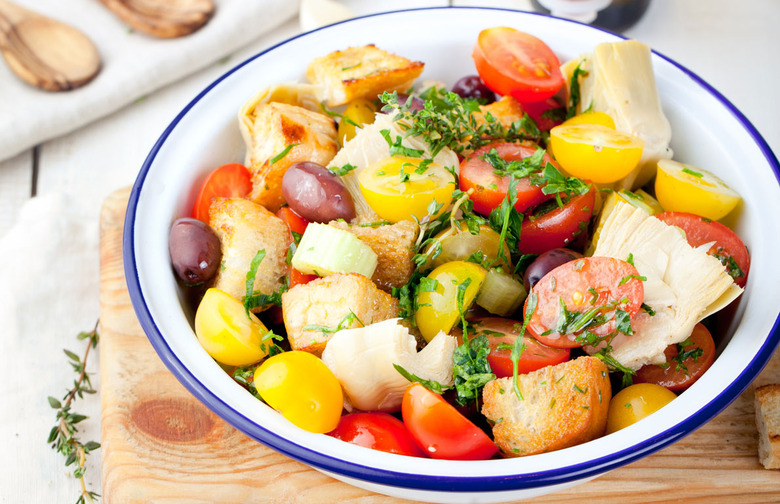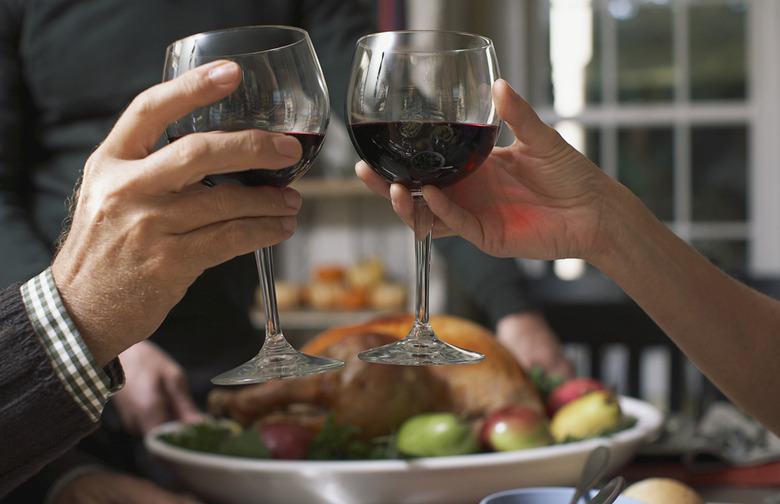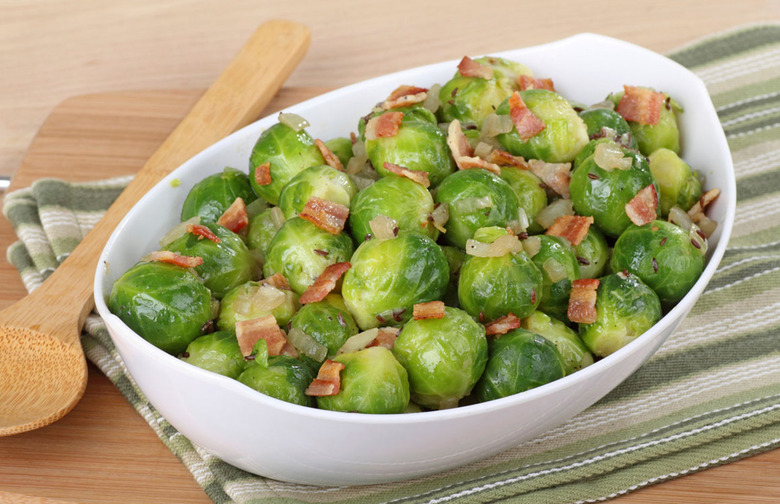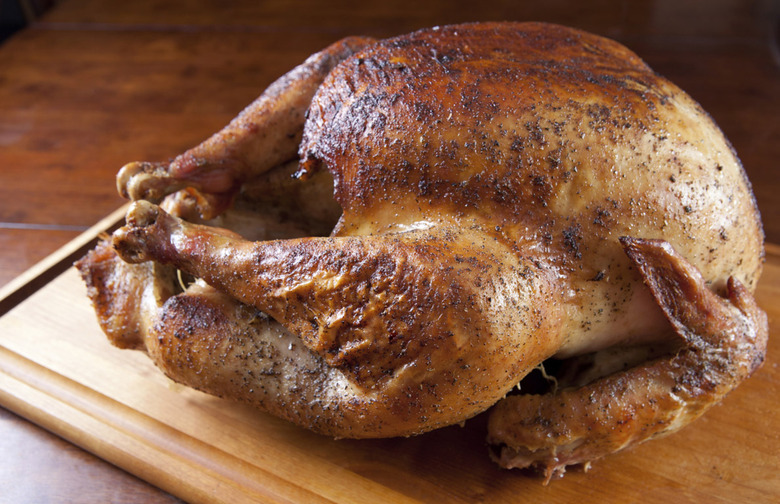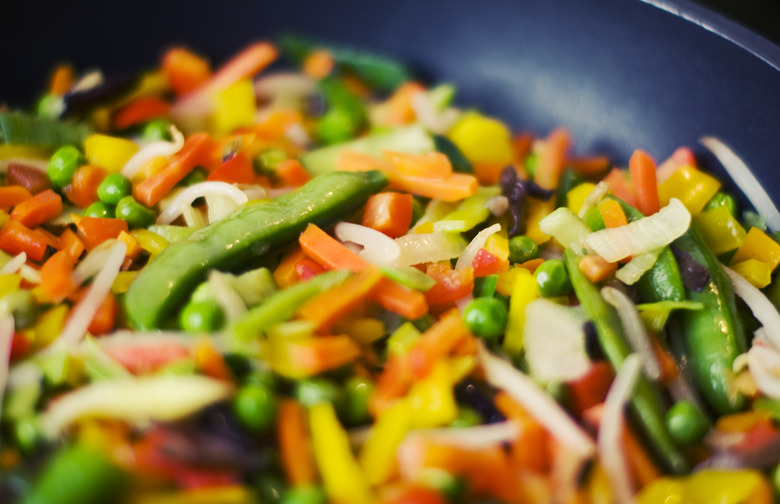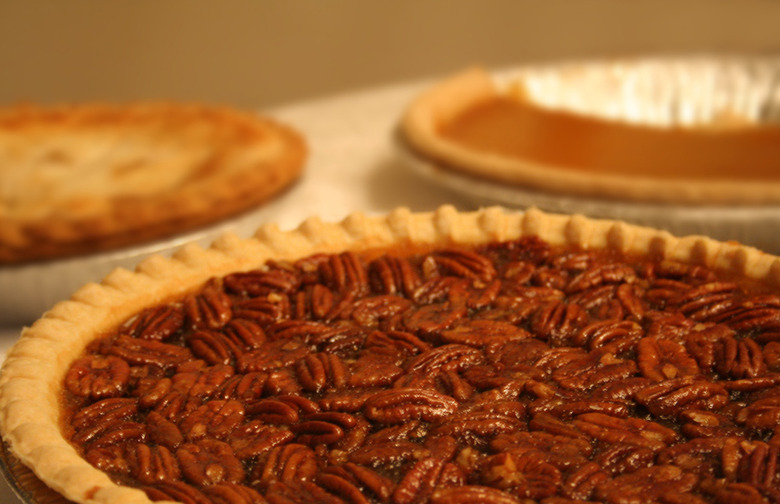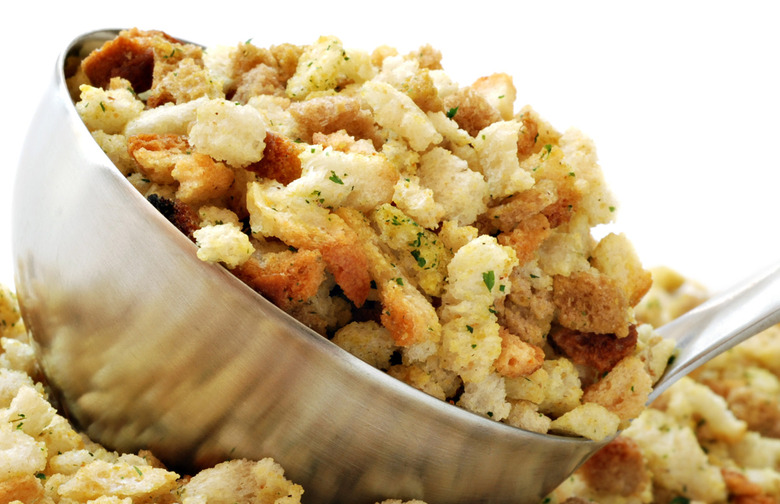26 Tips For A Healthy And Happy Thanksgiving From Top Nutritionists
Have you ever wondered if it's possible to enjoy your Thanksgiving dinner the healthy way? It isn't easy when you're bombarded with pumpkin pie, creamy mashed potatoes, and holiday cocktails — but, yes, it is possible. To give you the lowdown, we spoke with five nutritionists about everything from portion sizes and calorie count to which foods to eat and which foods to avoid.
Be Active
"Incorporate activity into your Thanksgiving Day," said Lanette Kovachi, corporate dietitian for Subway. "Not only does this help burn off some of those extra calories, but it keeps you energized so you can enjoy family, friends, and festivities. Start the day with a nice long walk, run, or any activity you like. After the main meal, rally friends and family to join in on a neighborhood stroll or game like flag football."
Bring Healthy Alternatives
If you're one of those families that includes pasta in their Thanksgiving menu, then "swap out your traditional pasta for thin ribbons of spiralized zucchini," said Colette Heimowitz, Atkins' VP of nutrition and education and resident nutritionist. "At only 4.8 grams of net carbs per serving, this recipe for zucchini pasta with almond pesto is a delicious alternative. You can substitute zucchini for pasta in any dish, or use thicker ribbons for lasagna." You can even substitute macaroni with cauliflower and make a healthy mac and cheese.
Come to Thanksgiving Hungry, But Not Starving
"The 'I want to save my appetite for dinner' mentality can be a dangerous thing," said Haley Whitley, nutritionist and Pilates ProWorks instructor. "Make sure you're having a few smallish meals before the big one so you don't go into it starving. Approaching any meal, but especially Thanksgiving, totally famished is a bad idea because chances are you'll stuff yourself with too many appetizers, overeat, and generally overindulge. With that being said, light and veggie-based meals are great for the day of so you can make sure you're prepared for some holiday festivities!"
Continue Your Healthy Routine
"If you don't already follow a lean, healthy diet, the days leading up to Thanksgiving are a great time to start," said Amanda Foti, registered dietitian of Selvera Wellness. "Eat three meals and one to two snacks as needed per day with lean protein, fruits, and vegetables in proper portion sizes. Establishing a healthy meal routine is a great way to help coast through the plethora of food that is sure to be served on Thanksgiving."
Cut Your Portions in Half
"For starters, whatever amount you think you can eat, cut it in half," Foti said. "If you need to go back for seconds you can, but chances are you won't need to."
Do Not Restrict Yourself
"One thing you shouldn't do is follow a restrictive diet or cleanse that significantly decreases the calories you consume," Foti said. "This will have an effect on your hunger levels, cravings, metabolism, and even your mood. Furthermore, if you're the one hosting dinner this year, you're going to need proper nutrition to get you through all those errands and chores!"
Drink Healthily
"Seltzer with a splash of juice or mixed with wine is a great way to spice up water," said Kelly Springer, RD. "For alcohol, reach for a glass of red wine for about 124 calories per five-ounce serving or Champagne, which will be 78 calories for a four-ounce serving. If you are kicking back and watching the game, reach for a cold beer, around 164 calories per bottle. The key to adult beverages is moderation."
If You Really Want It, Do Not Deprive Yourself Completely
"The most important thing I like to share with people is to not limit yourself or you will begin to feel deprived," Springer said. "This feeling makes it difficult for you make good choices. If you want to eat something, you should take a one-to-two bite sample of what it is you want. Consider avoiding the things you get all the time and use the calories on the things you get once a year."
Keep Your Appetizer Small
"For appetizers, fill a small napkin with the few snacks you'd like to munch on, keeping in mind a large dinner is just around the corner," Foti said.
Make Your Plate Colorful
"Don't go '50 Shades of Beige,'" Whitley said. "Get a rainbow of colors, which indicates a variety of nutrients and food groups. Did you ever notice that mashed potatoes, turkey, gravy, biscuits, and stuffing are all beige?"
Pace Yourself
"Don't go in for seconds," Whitley said. "But if you do, wait at least 20 minutes so your body can communicate with your brain and tell you how hungry you actually are."
Portion-Size Your Dinner
"For dinner, fill a small plate with the main course and all the sides you want," Foti said. "Some settings will offer multiple plates and bowls, but you should try to avoid this if possible. Finally, if you plan on enjoying a little after-dinner dessert, choose a half serving of any one dessert that is being served."
Practice Mindfulness
"Perhaps even more important than portion control is [avoiding] mindless grazing — on sugar in particular," Whitley said. "It's easy to get distracted by social events and gatherings where there's always [unhealthy] food around. Mindfulness is key. Concentrate on the company you're with, get away from the appetizers, and move around the party. Again, keep drinking water. Save anything sweet for after dinner."
Stay Hydrated
"The Wednesday before Thanksgiving is a big night to go out and meet up with friends that may be in town for the holiday," Springer said. "Thanksgiving is full of food, family, and drinks, so with these two big days, we may be forgetting to drink water, which can leave us feeling depleted. The best way to combat this is to have plenty of water."
Take Advantage of the Nutritious Foods
"Turkey is an excellent source of protein that will keep you feeling fuller longer," Kovachi said. "Stick with more white meat to cut down calories and saturated fat. Thanksgiving is a perfect time to take advantage of the nutrient-rich produce; squash, carrots, Brussels sprouts, and green beans are just a few vegetables that make delicious side dishes. Pies based with fruit (apple, pumpkin, and blueberry) pack in the nutrition more than other empty-calorie desserts likes cakes, cookies, and pudding-based pies."
What to Eat: Homemade Cranberry Sauce
"Making cranberry sauce homemade will allow you to control the ingredients, specifically avoiding any added sugar," Foti said. "One-fourth of a cup contains 40 calories, 18 grams carbohydrates, three grams fiber, zero grams fat, and zero grams protein."
What to Eat: Sweet Potatoes
"Sweet potatoes are higher in fiber and lower in carbs than regular white potatoes and contain a number of health-boosting nutrients," Foti said. "A one cup serving is 115 calories, zero grams fat, two grams protein, 27 grams carbohydrates, and four grams fiber."
What to Eat: Turkey
"For turkey, choose the white meat portions over the dark and you'll be in the clear for a lean, low-fat protein source," Foti said. "One serving has 150 calories, one gram fat, 34 grams protein, and zero carbohydrates."
What to Eat: Vegetables
"Any fibrous vegetable served fresh, steamed, sautéed, or baked without any added sauces you can add to your plate," Foti said. "One cup or serving of green beans, Brussel sprouts, carrots, mushrooms, cauliflower, spinach, or side salads contains on average 40 calories, two grams protein, zero grams fat, five grams carbohydrates, and three grams fiber."
What Not to Eat: Canned Cranberry Sauce
"Although the homemade is on the healthy list, canned sauce can contain up to double the sugar and a number of artificial additives," Foti said.
What Not to Eat: Green Bean Casserole
"This is made with heavy cream and whole milk and topped with fried onions," Foti said. "Although it's a vegetable dish, it contains far more calories and fat than the vegetable itself. One cup serving contains 142 calories and nine grams fat. Additionally, it contains 14 grams carbohydrates, three grams fiber, and three grams protein."
What Not to Eat: Mac and Cheese
"No surprise here as this Thanksgiving favorite is an obvious carb- and fat-loaded dish," Foti said. "One cup is 420 calories, 24 grams fat, 28 grams carbohydrates, two grams fiber, and 14 grams protein."
What Not to Eat: Mashed potatoes
"Traditionally made with butter, milk, cream, and salt, this high-carb side should be swapped out with mashed cauliflower if possible," Foti said. "The same taste and texture and one-third less calories. For a one cup serving (without butter), you're looking at 215 calories, seven grams fat, four grams protein, 35 grams carbohydrates, and three grams fiber."
What Not to Eat: Pecan Pie
"Although made with heart-healthy nuts, this dessert takes the cake (pun intended) for the unhealthiest offering at the table," Foti said. "One-eighth of a pie is 500 calories, 27 grams fat, 64 grams carbohydrates, one gram fiber, and six grams protein."
What Not to Eat: Stuffing
"Traditionally stuffing is made with giblets, sausage, butter, and other high fat ingredients; it's best to avoid this side," Foti said. "One cup is 320 calories, 18 grams fat, 36 grams carbohydrates, two grams fiber, and six grams protein."
Your Perfect Plate
"Any dish that has a combination of adequate protein, healthy fats, and high fiber from nutrient-rich vegetables is a recipe for keeping you satisfied and less likely to grab unhealthy alternatives," Heimowitz said. "Feeling full longer is a recipe for success. For protein, options like turkey, ham, chicken, fish, or deviled eggs as an appetizer. For healthy fats, go with some kind of avocado dip and dip vegetables like peppers, cucumbers, celery, and broccoli. Or, use an olive oil-based dressing on your salad. For fiber, choose the most colorful veggies, like leafy greens, carrots, tomatoes, peppers, and squash."
